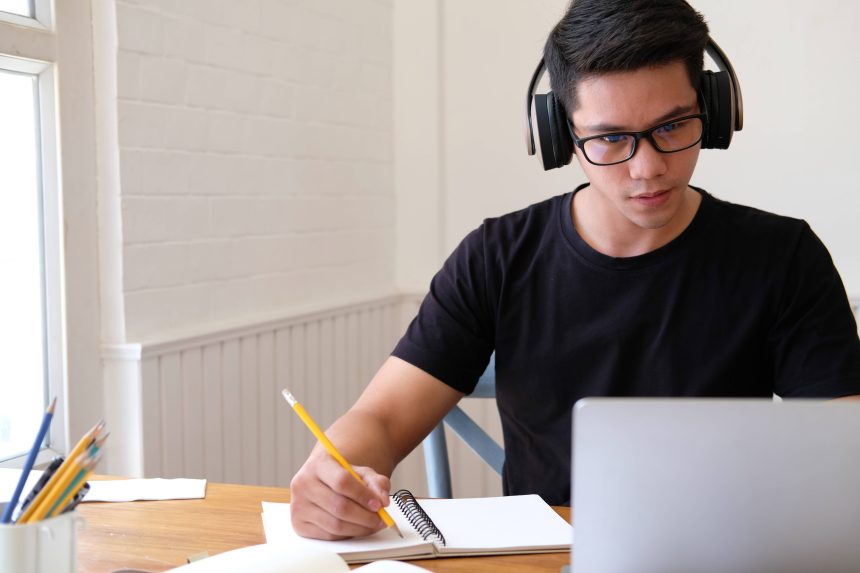For many teachers, the start of a new academic year is akin to the New Year: filled with expectant energy and resolutions that we promise to keep, perhaps to discover that Holy Grail of a work-life balance.
Yet, when term begins so often such resolutions fall to the wayside. Quickly, we find ourselves working later than we should, planning lessons long after our students have left, and marking piles of books well into the night. But, perhaps we shouldn’t give up so quickly. Perhaps, we should hold onto that start of term energy and, this time, aim to keep our resolutions.
In this article, I offer three high-impact, low-energy strategies for delivering effective feedback that have the potential to dramatically improve student outcome whilst helping us to leave those exercise books at school and reclaim our work-life balance ahead of the new academic year
Whole class feedback
Whole class feedback is increasingly popular and promises to improve student outcomes whilst simultaneously reducing workload significantly. The premise is a reasonably simple one: as we read student work, whether all pieces or just a sample across the class, we make a note of patterns of misconception, areas for development, as well as examples of excellence.
We then spend the lesson going through these points, as well as giving students time in the lesson to take some kind of action based on the feedback. Here, time and effort is diverted away from lengthy written comments, which students may not fully understand or even simply disregard, and instead to do what we do best: teach.

The specific form of the feedback sheet may change from teacher to teacher and school to school, but there are some underpinning strategies and principles that will serve you and your students well. For instance, you might include an area on the sheet to outline specific errors or misconceptions that emerged multiple times across the class.
Or you might include a series of ‘next steps’, which could even be numbered so that students know which specific task to be working on in the lesson. I’ve also found that identifying and then live marking examples of excellence from across the class can work especially well as this offers students a concrete model of what success looks like as well as allowing you the opportunity to showcase and celebrate student work.
Whilst whole class feedback can be a real game changer, it doesn’t come without its own potential pitfalls. One such pitfall is collecting everything on the sheet, handing it back to students, but then not doing anything with that feedback. The real value of whole class feedback is to place primacy on the higher-impact activities of re-teaching and offering specific, actionable steps for students to follow and then allocating lesson time to do this.
Digitised verbal feedback
For me, one of the benefits of lockdown was being introduced to technological strategies for delivering verbal feedback, such as, Class Notebook or Mote. Yet, these don’t have to be used just during lockdown. If student work is submitted via Notebook (or the Google equivalent) it becomes incredibly easy to leave personalised audio notes for students.
The audio note can be stored next to the work itself, meaning it’s in the exact same place they uploaded the work. This also means other students cannot access or listen to the audio note, but you can copy and paste that audio note and add it next to other student work if it’s applicable to more than one student. Any audio notes are then stored in this location forever and replayable as many times as desired!

To try to make this as effective as possible, I’ve tried to make sure any audio note is very precise in its feedback, anchored to a specific section of the essay (typically highlighted), and usually includes some kind of action for the student to take. It might also be that I ask students to make a note of a key takeaway based on the feedback they’ve listened to, maybe typing this next to the note or at the end of the essay. They would be given time in lessons to listen to any audio feedback. You could also replicate a very similar experience via QR coded stickers that you stick into student books for them to scan and listen to.
Verbal feedback delivered in this manner, like whole class feedback, has the potential to dramatically cut down on time spent marking whilst ensuring quality feedback.
Live marking
Traditionally, marking has been viewed as something we do away from students, a secluded activity that takes place in the office or at home. However, there is great power in opening this process up and doing it with and in front of students.
By verbalising your thought process as you mark a piece of work, commenting on what is working well and what could be developed, you are allowing students access not only to your expert thought processes but also a more concrete schema of what does and doesn’t work well. You can also intersperse this process with pause points, where in light of what has been discussed students go back to their own work or complete a related task.
Yet, as well as the obvious benefits to student understanding and learning, by reframing marking as something done in and not outside of lesson time it becomes yet another way to reclaim our work-life balance.
Marking has long been considered one of the most stressful and time consuming aspects of teaching, but as we start a new academic year and look to reclaim a more positive work-life balance the above strategies can help not only to save us time, but to improve student outcome. By shifting our focus away from marking and towards feedback, in all of its permutations, we might just keep our resolutions.







Comments